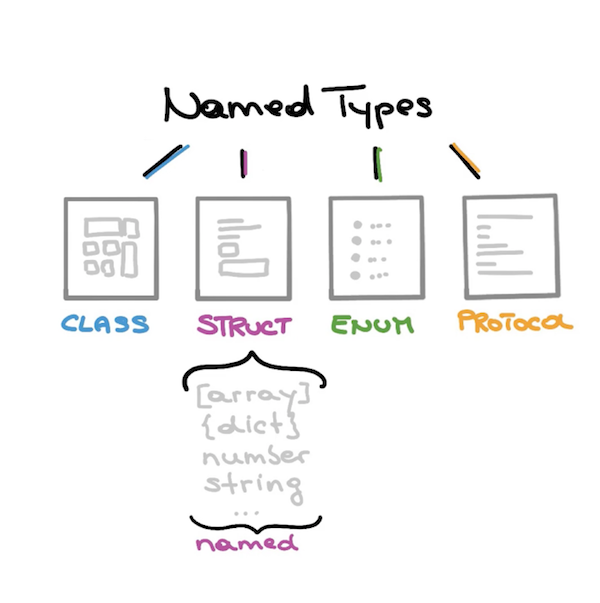The Secret Life of Types in Swift

At first glance, Swift looked different as a language compared to Objective-C because of the modern code syntax. Secondly, the strict and strong type system is also different.
This talk takes an under-the-hood deep dive into the Swift type system’s structure and gives tips how to use it in a proper way.
Introduction
I’m Manu, and I will talk to you about data types today. Swift is pretty simple compared to other languages, and Swift is pretty clear in its architecture of the typing system.
It’s All About Types
There are two things to know first. First, Swift says there shall not be root - $noRoot. And we will never have nil.

There’s no specific root type in Swift. For example, in other languages like Java, or C#, or static type systems, they have a root type. Swift does not have a root type, and empty values are not allowed.
In Java, an Integer is just a number. The inheritance line is not long, but we do have two stages of inheritance over the type itself, with interfaces, which conforms to a protocol. Objective-C is similar, as it also conforms to a protocol.

In Swift, Int is a type of itself, and it defines its data types as structures, not classes.
Dive into Types
In Swift, everything is a structure with no inheritance. The reason this is done is so we can have super loose coupling among each type, and can be extended throughout the whole type system. This allows for clean architecture.
Named Types

Named types are types that have names. It’s classes, structures, Enums, and protocols; essentially everything you are giving a name when you are using it.
Compound Types

A compound type is a type with no name. The two types of compound types are tuples and functions.
Tuples
This greatTuple variable has exactly the type Int, Int. This is a real type, it just looks like a bit different.
You can attach, or assign a different Int, Int tuple. To do so, leave the parameters, and use the numbers themselves. You can enter the values with the .0, and .1, and so on. Or, you can use the parameter names again.
Let’s continue with tuples, and where they are really meaningful.
Suppose we want to return more than one value from functions. This is done by just defining the types in the return as a tuple.
Tuple types are unnamed but you can give them a name. With the typealias, you can do exactly this.
Here, we are defining a tuple of just two Ints. There is a variable named Point.
Function Types
Like tuples, functions types are also common.
If I want to return nothing, you can get by with writing nothing. The thing exactly after the name of the function, until the first bracket, is the function type.
https://academy.realm.io/posts/altconf-2017-manu-rink-secret-life-of-types-in-swift/?w=1




